TriMet has spent six years and about $175 million to establish a new kind of bus service on Southeast Division between downtown and Gresham. Now it’s finally time to see what this thing can do.
The Division corridor has been the poster child for our region’s struggles with climate killing car dependency, traffic deaths and poor transit service. When it opens on September 18th, TriMet hopes its new Frequent Express (FX) line starts a different narrative; one where Division is more humane and welcoming, and where buses finally move out of the shadows of light rail and take a starring role in non-car travel.
This morning TriMet hosted a sneak peek of the FX Line 2. I hopped on board one of the 31, 60-foot articulated buses that will soon serve 84 new bus platforms on the 12-mile corridor.
As we motored eastbound on Division from Portland Community College at SE 82nd, TriMet Division Transit Project Director Michael Kiser held court with several reporters. He detailed how the agency was able to speed up bus service, serve more people and improve safety in one fell swoop (and with a big assist from the City of Portland).
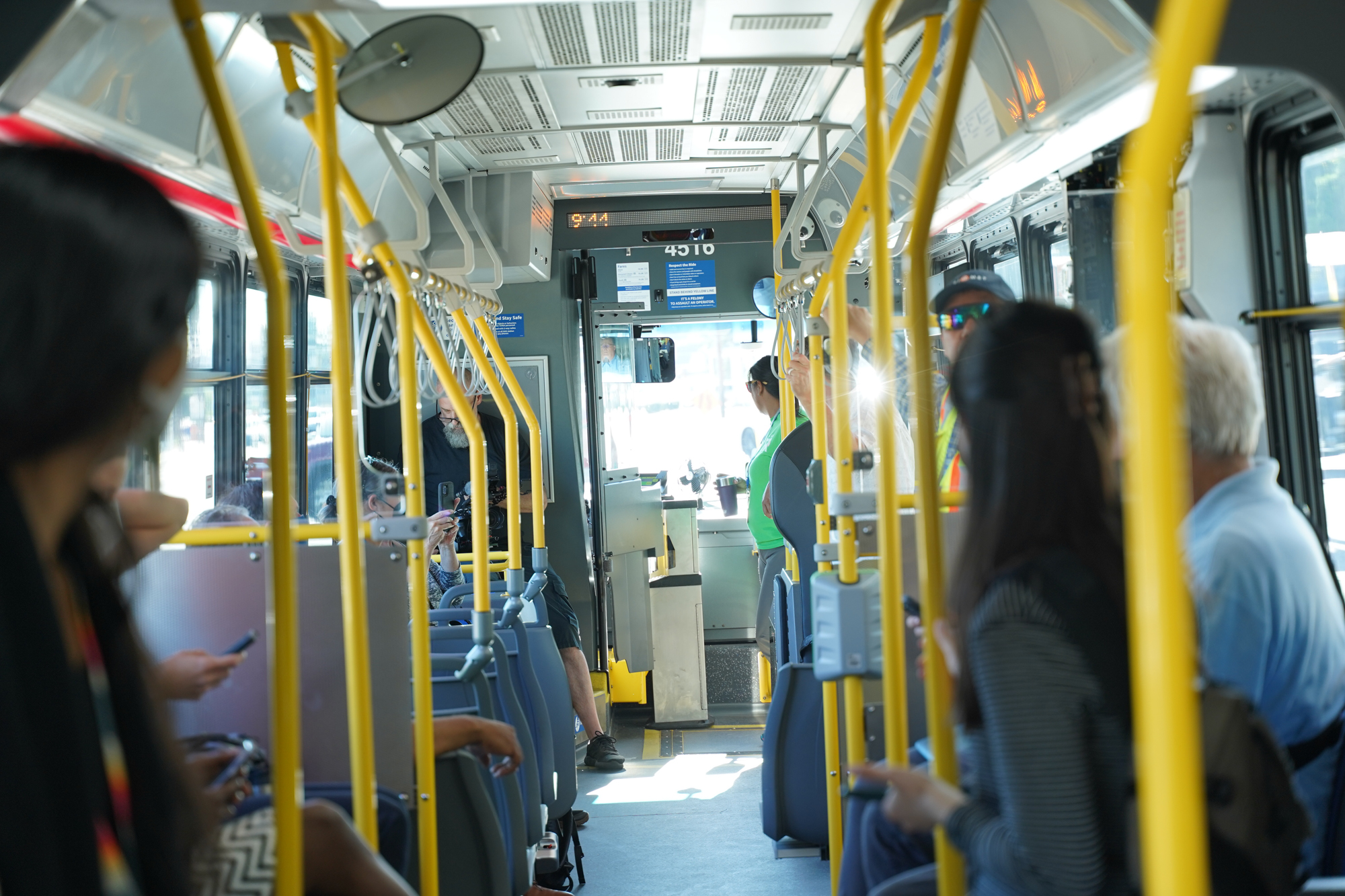
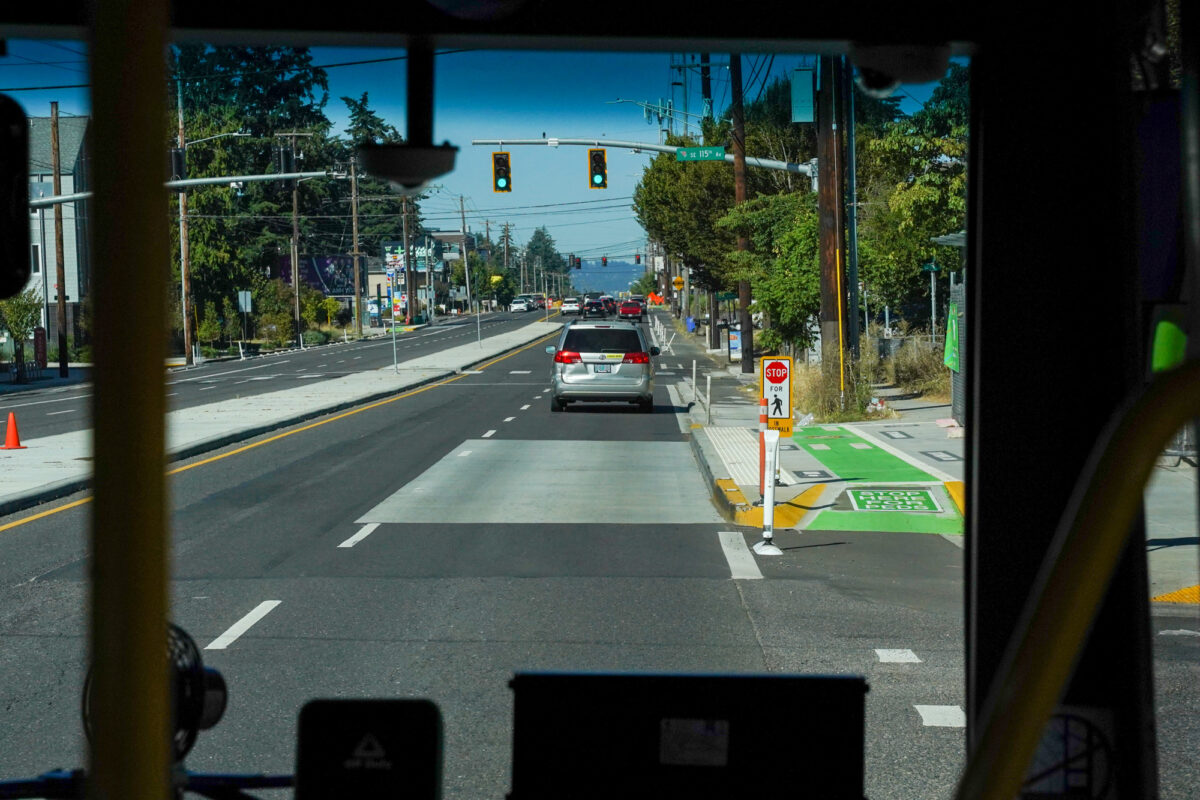
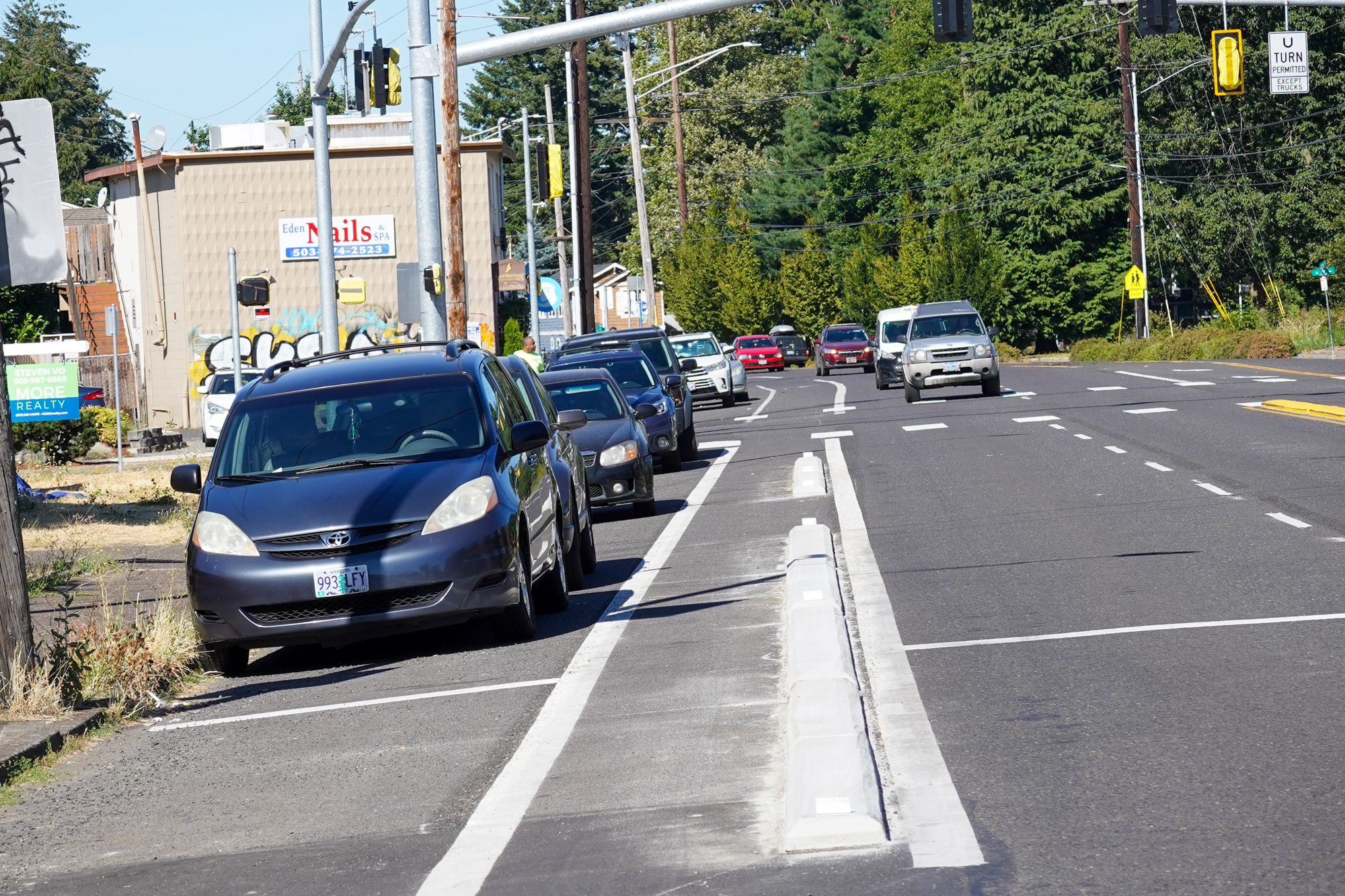
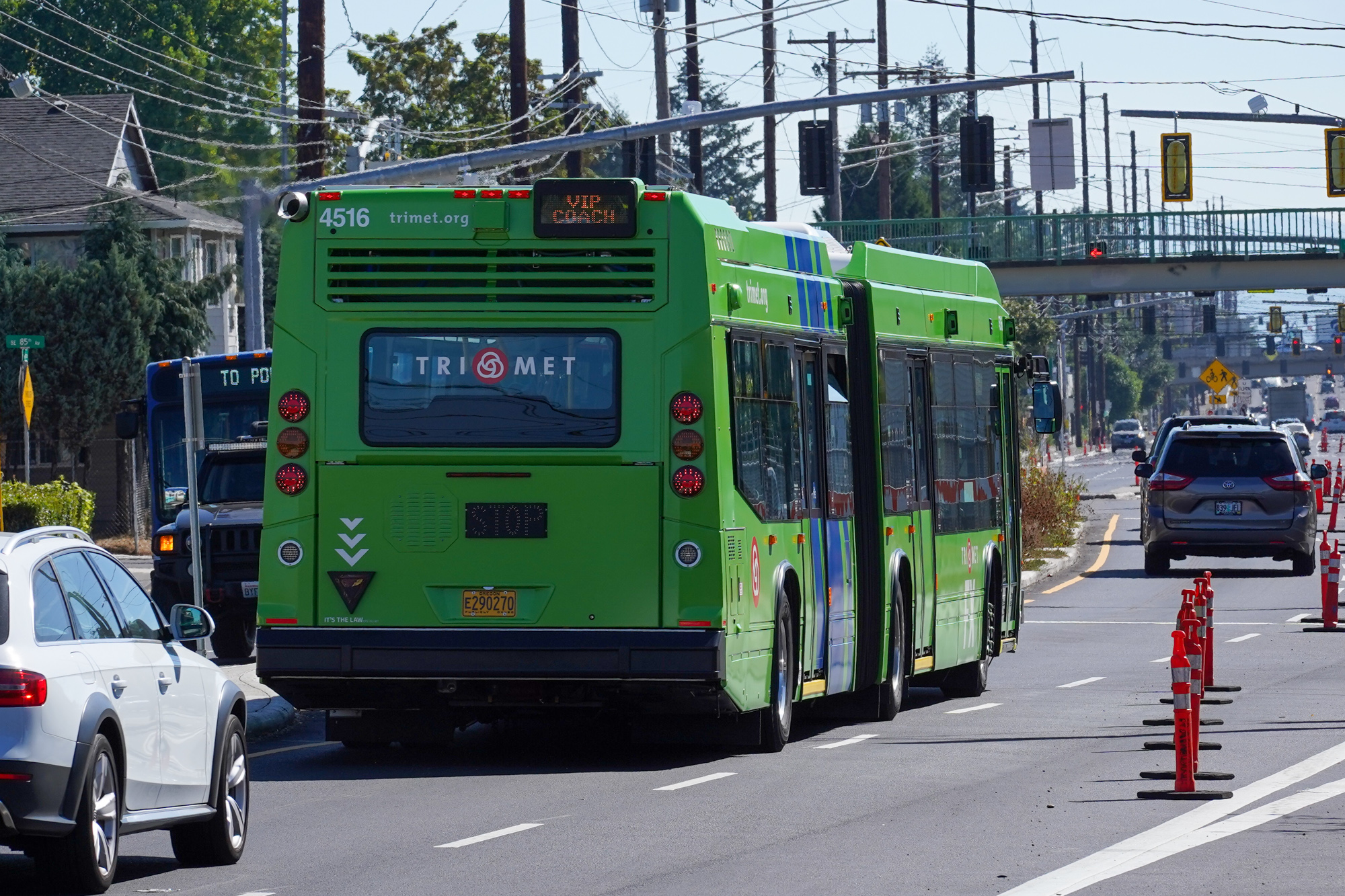
“Prior to this project we were passing up people just because we simply didn’t have the room on the bus.”
– Michael Kiser, TriMet project director
The FX lines boasts 12-minute headways and will shave significant seconds off trip times. TriMet Public Information Officer Tia York said the agency estimates the average rider will experience 20% faster trip times through the corridor (and it would have been even faster if the route didn’t divert south to the Tilikum Crossing instead of using the Hawthorne Bridge, but I digress.)
TriMet used a variety of methods to boost bus speeds.
One “very big lift” according to Kiser was collaborating with traffic engineers at the cities of Gresham and Portland to use machine-learning software to estimate arrival times and adjust signal timing at intersections accordingly. This transit signal priority will give bus operators a leg-up on the busy corridor.
The FX line will also have all-door boarding and fare validator machines at all three doors. The buses also don’t have to pull out of a traffic lane to pick up passengers. This means they can stop and get rolling much faster without having to wait for a break in traffic. There are also fewer stops along the route. Some sections of red bus-only lanes we see on the Portland Bureau of Transportation’s Rose Lane projects are coming too. They aren’t on the ground yet, by Kiser said they should be by opening day (red lanes as a design standard wasn’t in use when TriMet design this project, hence the late implementation).
These time savings are combined with buses that can fit 60% more people. “Prior to this project,” Kiser shared, “we were passing up people just because we simply didn’t have the room on the bus.”
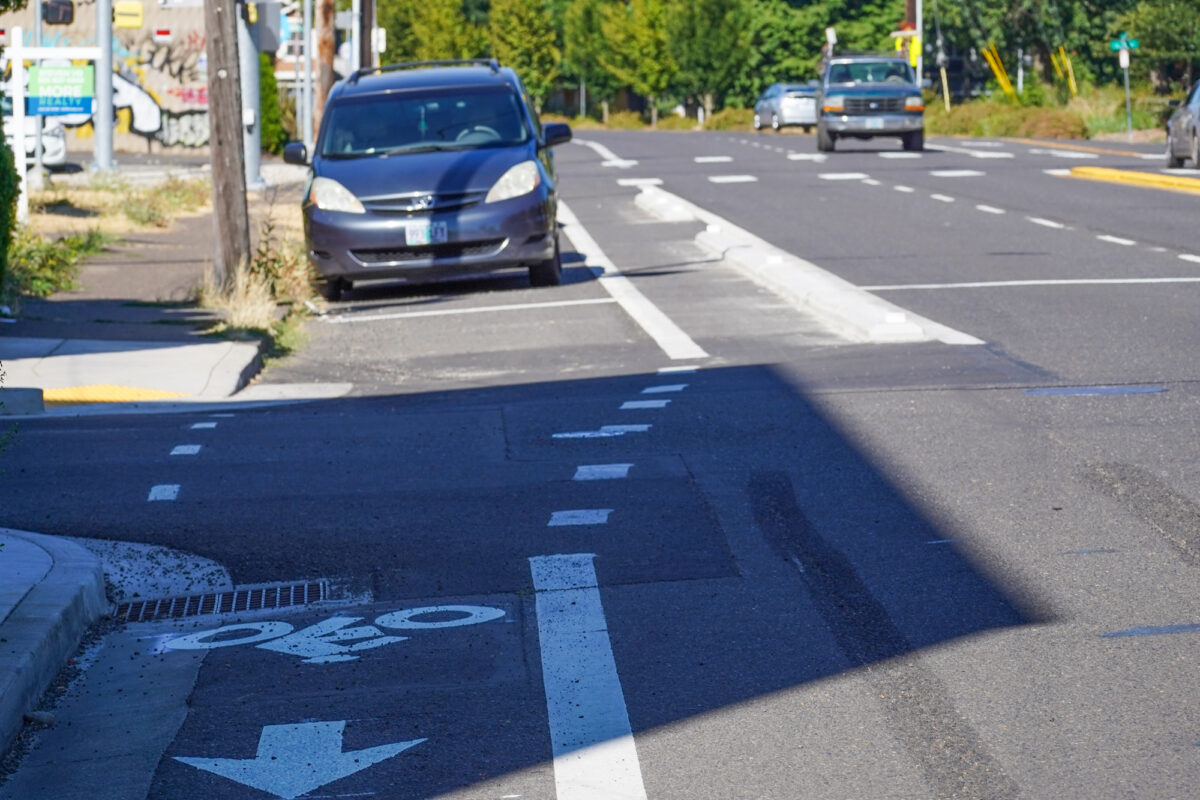
“This is a huge improvement for biking in east Portland,”
– Dylan Rivera, PBOT
Every time someone takes the bus instead of their car we reap major safety benefits. But there are other changes to Division meant to make it safer. Many of them, about $13 million worth, were concurrently installed by the Portland Bureau of Transportation as part of their Outer Division Safety Project.
PBOT spokesperson Dylan Rivera was on the bus with us. He rattled off an impressive list of project elements: three protected intersections, 4.5 miles of protected bike lanes with physical separation, bike only signals with bike detection, 81,000 square feet of new sidewalks in the whole project, almost 60,000 of which are in Portland, and 11 new marked crosswalks with stoplights, median islands and flashing beacons.
“This is a huge improvement for biking in east Portland,” Rivera said.
But a bike lane is only a bike lane if PBOT can keep people from parking cars in it. And on Division, PBOT and TriMet have a lot of work to do on that front. Kiser with TriMet said, “Parking in the bike lane will be an ongoing challenge,” and added they are partnering with PBOT to come up with a solution. But it didn’t sound promising. “Obviously, we have a lot of enforcement issues across the city right now,” he added.
Drivers have lost curbside parking spaces and they’ve lost the ability to turn into any driveway anytime they want. That’s because of new “access management” medians added for safety. This is another name for curbs in the middle of the street installed to prevent people from turning left out of — or into — driveways along the route.
“Transitioning to this changed environment is going to take some time. And access management is a big part of that,” Kiser said. “At times it has made it less convenient for motorists, but it’s safer for pedestrians. The pedestrian fatalities we’ve seen along this corridor is a big piece of how we approached the design.”
The Division streetscape feels very hectic. There’s just a lot going on. The medians help chill things out a bit. They also reduce available space on the road — something TriMet and PBOT had more flexibility on in the design of this corridor because it’s a bus route instead of light rail. If MAX was the chosen solution, there would have been very little room left for anything else after the tracks went in (see East Burnside or North Interstate).
I asked Kiser why this corridor gets a bus while TriMet has favored light rail almost exclusively in the past.
“We’re really asking a lot of this particular corridor, Division is a real workhorse,” Kiser said, rattling off all the different users like freight truckers, errand-runners, walkers, and bike riders. “And we don’t have a parallel route for bicycles out here because the adjacent street network is discontinuous,” he pointed out. “If we would have put in light rail, something would have had to go, there’s not room for every mode. So maybe bicycles would not have been a component.”
Unlike every existing corridor with a light rail, there’s no parallel route for drivers on SE Division either (which makes me think if we would have built the Mt. Hood Freeway, this would probably have been a MAX project.)
I asked Kiser if he thinks Division Transit Project elements will trickle-down to other lines. He said it will and specifically mentioned upcoming “BRT” (bus rapid transit) projects on 82nd Avenue and Tualatin-Valley Highway. “Barbur too perhaps?” I asked, and he nodded in agreement.
The advancements in transit signal priority are especially exciting, Kiser said, because the software they’re using is backwards-compatible to every other bus in their fleet. “All the other buses have what they need to plug into that system from a technological standpoint,” he said. The new bus stations with raised bike lanes through them are another thing TriMet is excited to debut in this project that we could see elsewhere as time goes on.
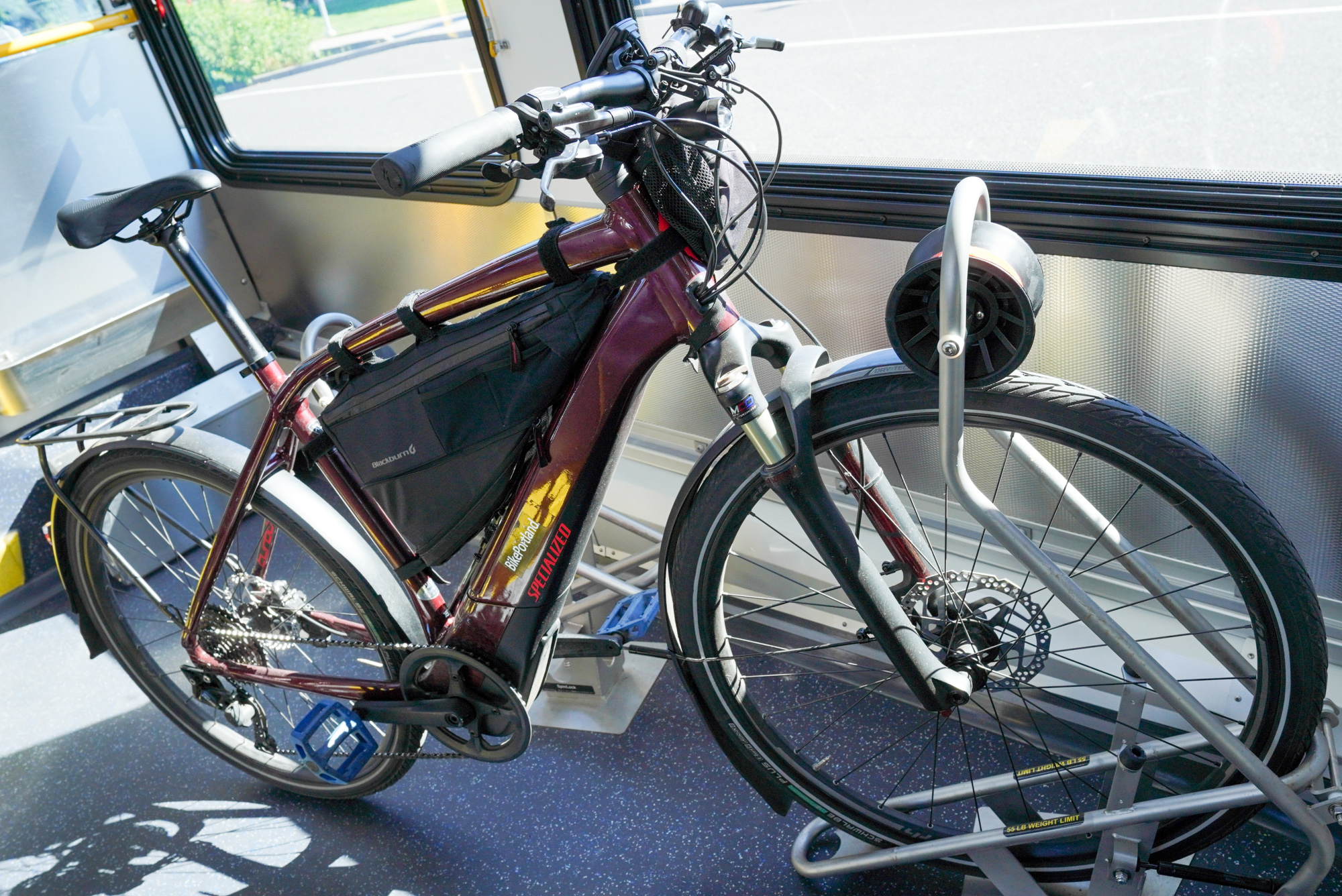
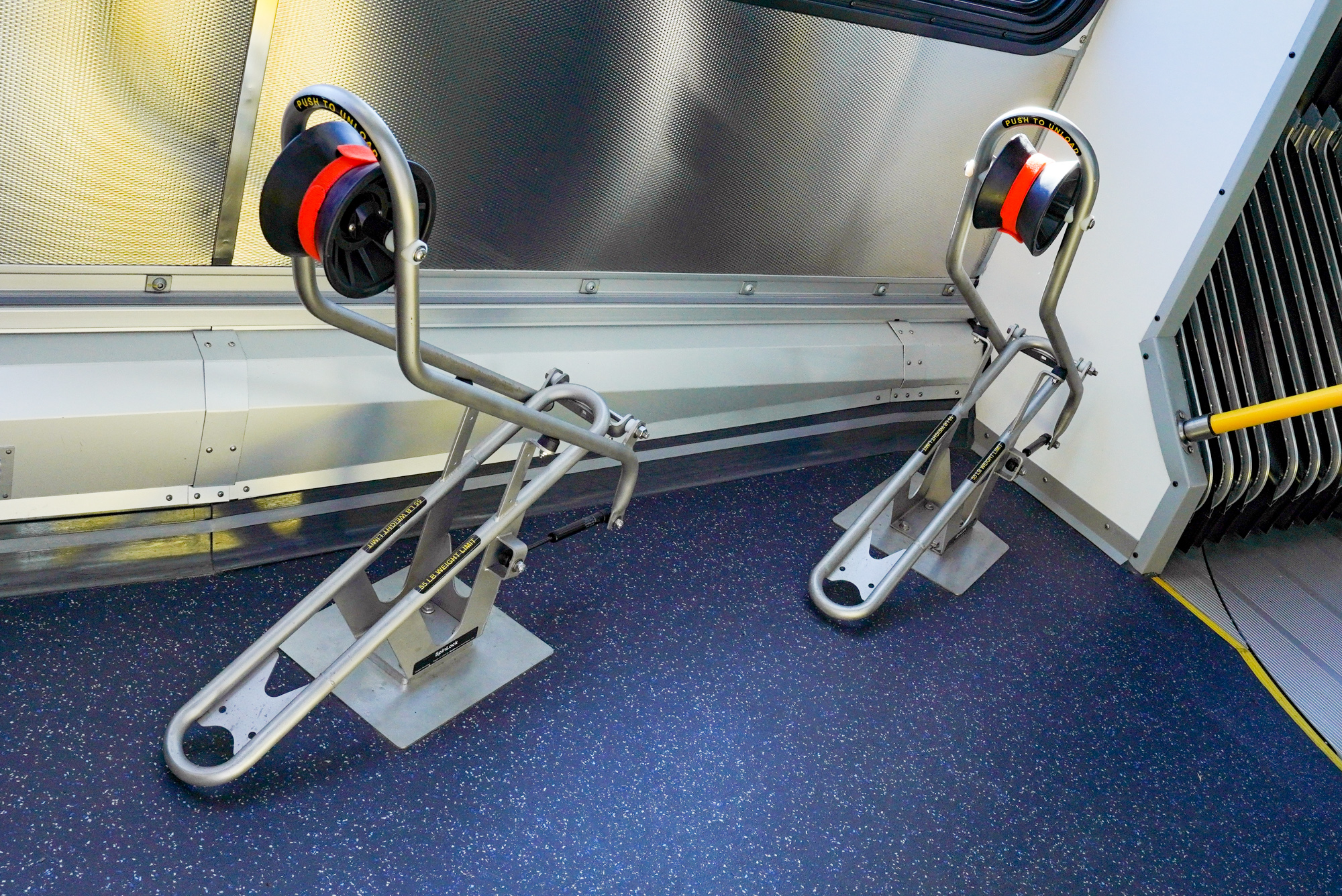
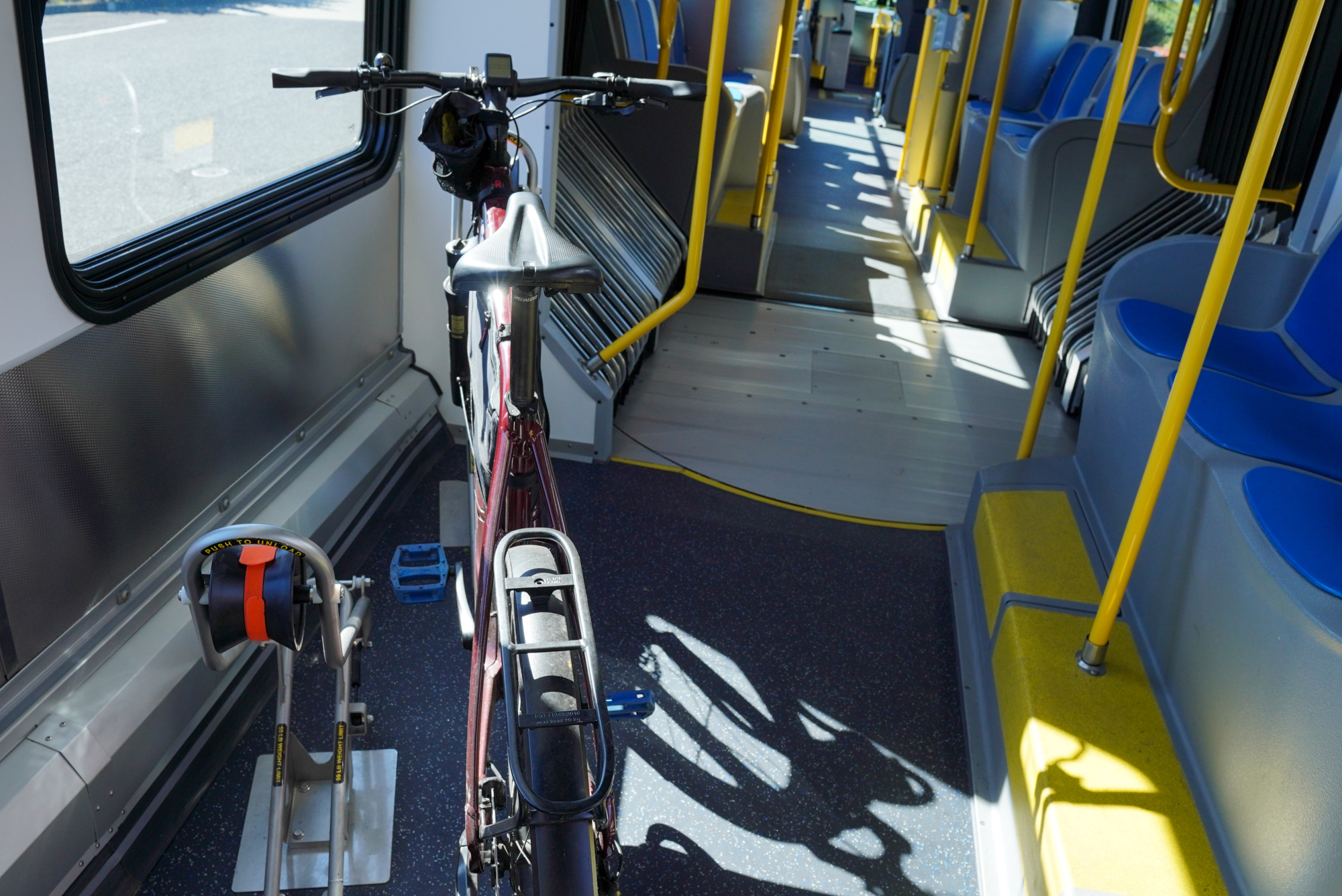
What about the bike racks?
Gone are the front-loading racks. Those waste precious time and weren’t the right fit for an FX line, Kiser said. The new racks are a model known as Spinlock made by Sportworks. They can fit wheel sizes from 26 to 29-inches (yes that includes standard road bikes) and tire widths up to 2.75-inches. Click the spec sheet on the right for a full rundown of the features.
There is space for just two bikes, the same amount TriMet buses have had for about three decades. C-TRAN’s similar buses on the Vine BRT route up in Vancouver, Washington have three racks. So why just two on FX? TriMet considered three racks, but didn’t go that direction. Kiser and another TriMet planner said it came down to competition for space between humans and bikes.
“It’s a balancing act,” Kiser said. “You want to be able to move as many people as you can and make sure they can get to their destination and then balance that with the need of bicycles.” If TriMet sees more demand for bike capacity, Kiser said they could revisit the issue in the future.
(See how easy it is to roll a bike into the racks in our TikTok.)
That’s not the only aspect of the FX TriMet might reconsider down the line.
12-minute headways are nice, but even more frequent service would be better. Is it possible TriMet could speed things up in the future? “I think so,” said Kiser. “With ridership levels being a bit lower now, with our shortage of operators, these things put strains on the service that we can put out. As things kind of get back to a more sustainable state, I think we we could see an improvement in the service.”
The new FX line is a big deal for TriMet. It’s their first major corridor project that isn’t a light rail line, and it feels like there’s a lot of internal buzz about what the means for the future of the agency. Bus projects are easier to implement, quicker to build, more flexible, and cost less than light rail. Does Kiser think FX marks a renaissance in bus service for the region? Not wanting to paint a picture of competition between the two transit modes, Kiser said, “It gives us another tool in the region to reduce our reliance on vehicles. So certainly we are going to see more of it. Because of what doors this project opens up.”


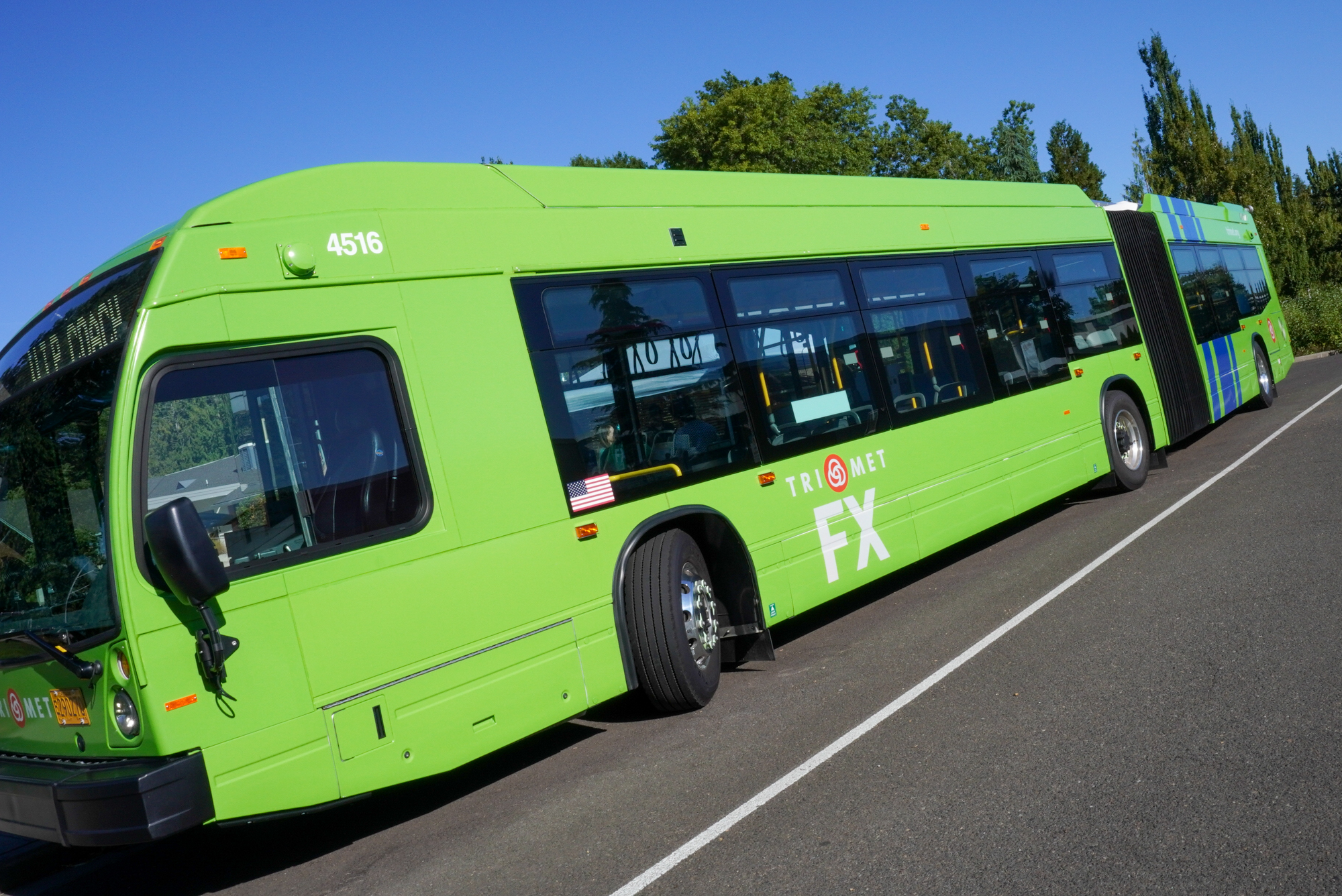
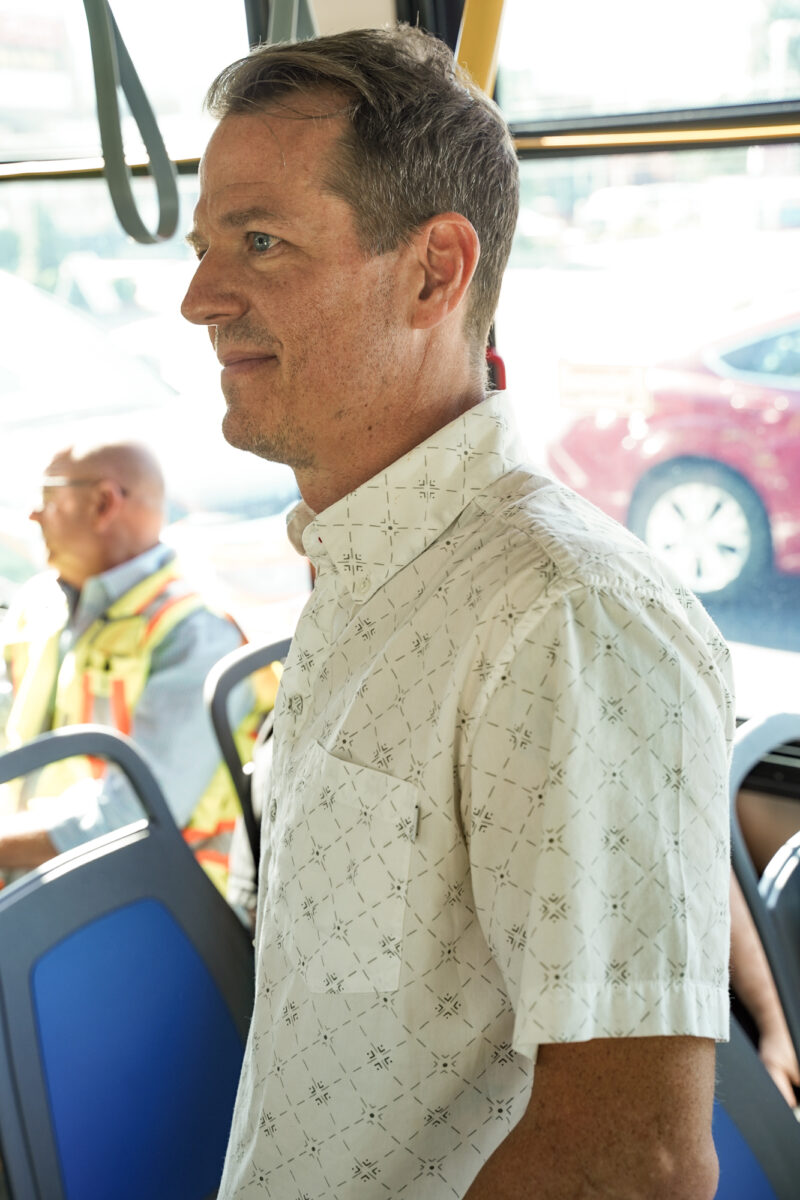
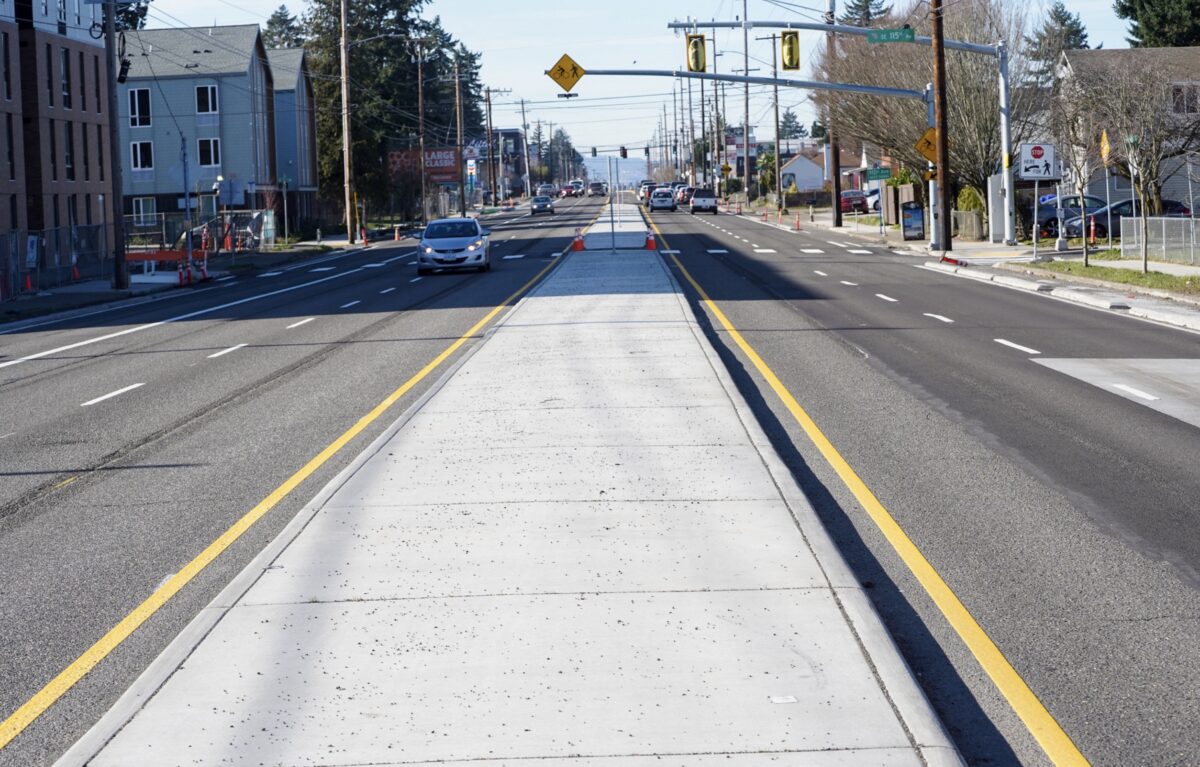
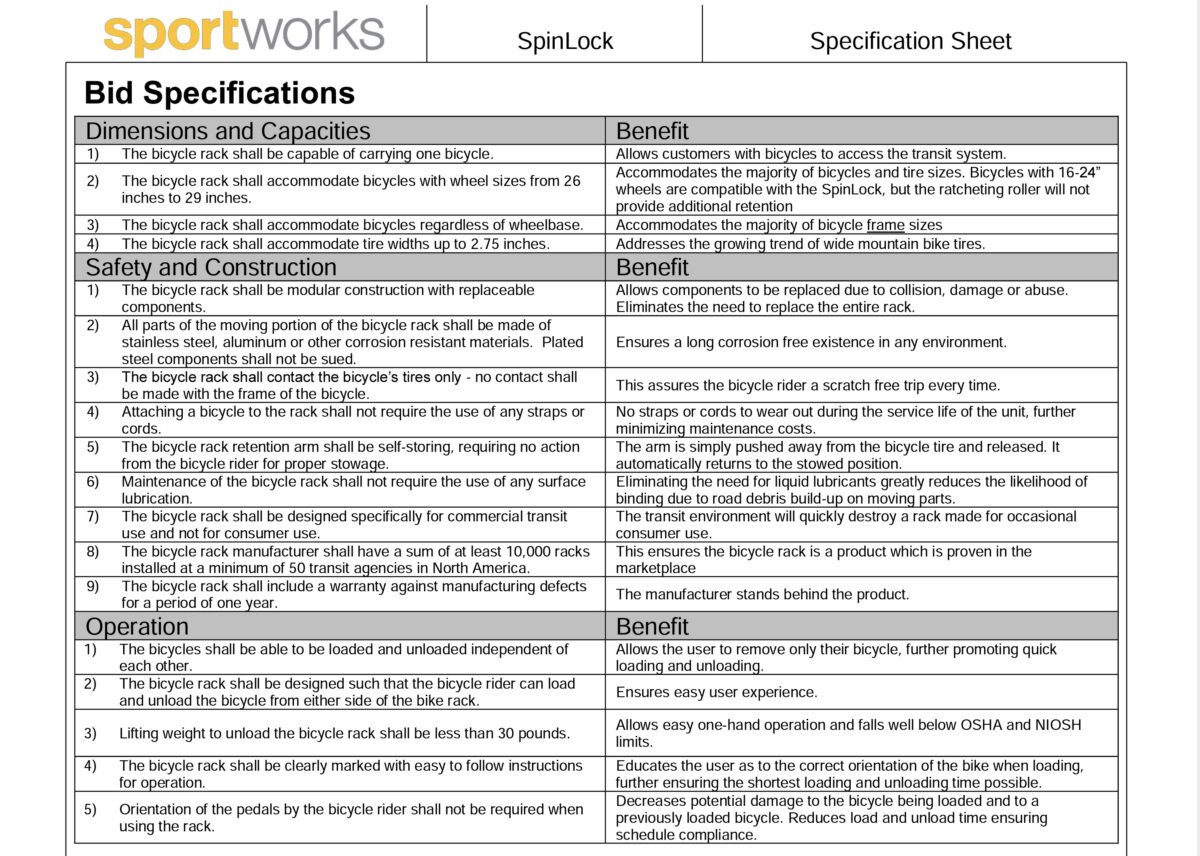
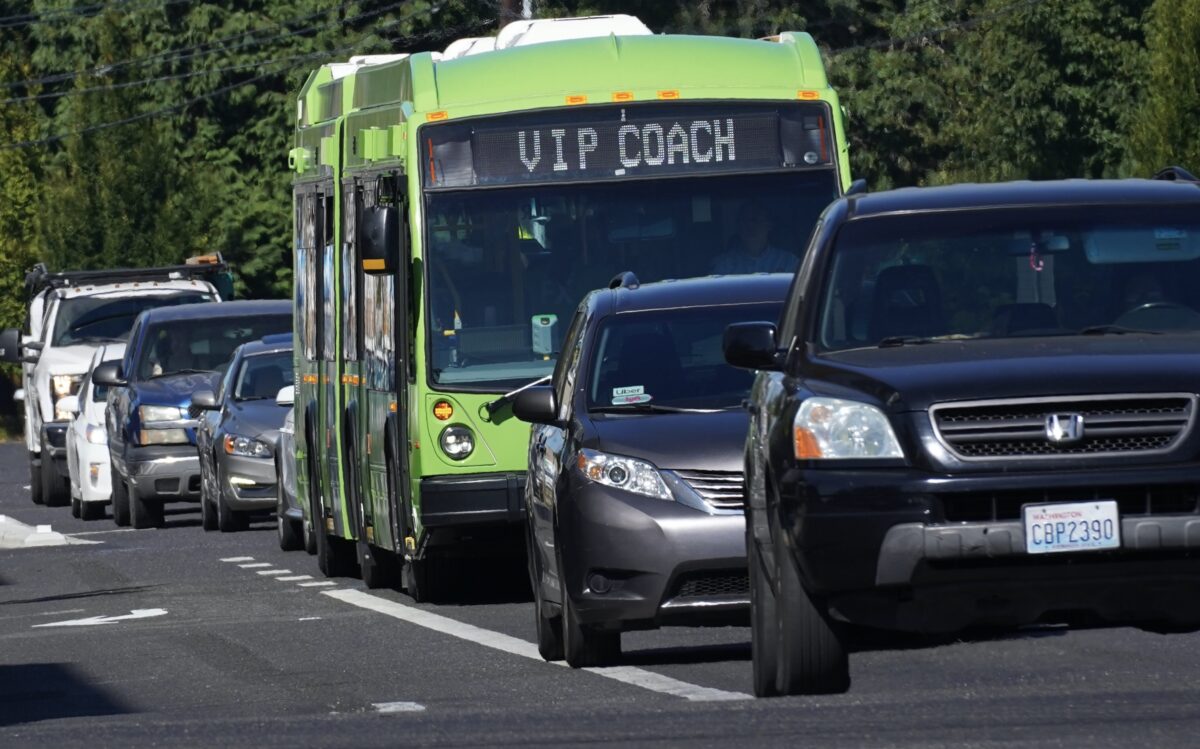
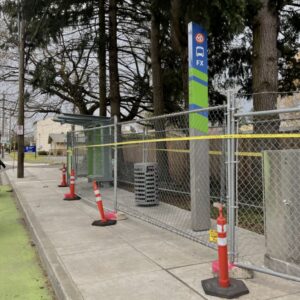
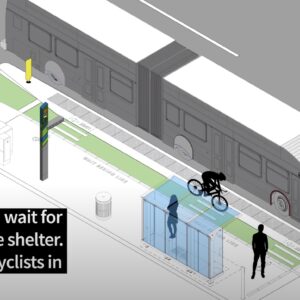
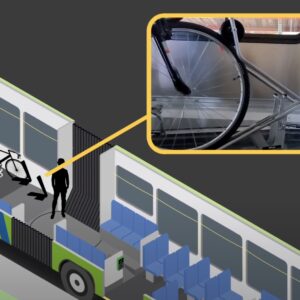

Thanks for reading.
BikePortland has served this community with independent community journalism since 2005. We rely on subscriptions from readers like you to survive. Your financial support is vital in keeping this valuable resource alive and well.
Please subscribe today to strengthen and expand our work.
I can’t help but feel the FX line really symbolizes the current state of transportation politics in the region.
Back in the 70s and 80s I think there was real headway in disestablishing car-dependence in the Portland Metro Area. With the UGB now in place, what we see now as a backbone of sustainable transportation was really seen then as the only way to realistically move people in a rapidly populating yet constrained urban region. We knocked down freeway projects and let ghost ramps to Robert Moses’ future freeways be. Instead with that money we built one of the first light rail systems in North America. We really looked at how things were going, and knew that we needed to change direction to better sever future generations.
Was there a lot of friction? Yes! But now as the generation after those decisions were made are we fortunate to have it? I’d like to think so.
Zip forward to now. We had the 2020 Metro transportation bond fail. Portland has since then celebrated 2 ‘carfree’ bridges that I both love, but would argue are still car infra as they were funded as emergency vehicle bridges that navigate over…freeways. We have declining bike and transit mode share. Not a single commissioner is willing to seriously lead and bring to the table Portland’s TSPs mode share goals (I often get scoffed at when bringing up 25% mode share by 2035). And now: our grand project for this era of transportation in Portland is a bus rapid transit project that’s been whittled to not even one.
While I’m excited for the future of Division, I’m left disheartened that this is what Portlanders are building when we really used to lead the way for sustainable transportation in North America. I know there could be novels written on this, but we just seem to have a lot of friction these days to really implement infrastructure that changes the way we live for the better of our climate while providing an equitable connection to the Portland Metro region. It seems other cities have caught on, and are generally lapping Portland with how quick they are getting active transportation projects off the ground to serve their citizens.
At the end of the day, I remain grateful for everyone who had a hand in the FX project. Its a great project that will ultimately serve such a huge swath of historically disadvantaged communities. At the same time, I am dismayed by the fact that this project was just not willing to push for what needs to happen to make Portland reach its climate goals and disestablish car-dependency. Its 2022 and we just wont get where we need to be at this pace. Not even close.
The basic problem is that Oregon is a relatively small state in terms of population, per-capita-income, tax base, and congressional representation. Portland was one of a small handful of cities to build light rail or other mass transit instead of huge new freeways, taking advantage of a generous federal program in the 1970s & 80s that paid for 90% of the costs (Atlanta, Sacramento, and Salt Lake City also took advantage of that program in a similar way.) That federal generosity pretty much dried up by 1993 and has been a slow trickle ever since. Most cities are now predominantly dependent on local or state resources for such expansions and the feds are relatively minor players nowadays.
The transit boom you enjoyed in the 70s, 80s, and 90s was a temporary Giant Leap Forward that you will probably never again see in your lifetime, at least in Portland.
I have hope, especially since sustainable transportation anywhere is good news, but it just seems like other cities, including similar sized US metros and smaller, have been outpacing Portland. We all live with the same fed programs, too.
Also to note that it would be a group like the Oregon Transportation Commission / State legislature to heavily invest in transportation at the scale needed throughout Oregon to critically change car-dependency without Fed money. But we just literally doubled down on some billions on freeway enlargements. Also I’m not aware of any provisions that the future expected toll monies need to go to active transportation.
We could do it, but I feel there has neither been the political will in elected officials nor the widespread appetite from the community to holistically take the prolific steps needed to tackle climate change as needed via sustainable transportation.
Kicker: It was just announced its the hottest August on record for Portland.
I sympathize, but Oregon has this certain irrational phobia about not using any non-transportation funding for anything remotely transportation related. Here in NC, the state and cities regularly use sales tax, income tax, and other non-transportation revenue sources to fund highways – and most other states do this too. And so we have an ever-expanding (and very wasteful) freeway system, but also plenty of money apparently for railway overpasses, new double-decker passenger trainsets, subsidized free transport of bikes on in-state Amtrak trains, light rail and streetcar in Charlotte, BRT in Raleigh, and various protected bikeways throughout the state, even when they don’t really connect to anything to anything else. Virginia has it even better. But both states are relatively large and compact – 10 million versus 4 million in Oregon – and all the county roads are owned by the state, so more money gets raised locally and statewide. Good stroads are strongly linked to job growth in most people’s minds in both states no matter the partisan affiliation (Virginia tends to be more liberal than NC) or race.
You are right, we all have the same federal programs, more or less, but the local match has been steadily increasing since the 90s – 80% local is the norm now on most federal programs, when you can get them. And since both NC and Virginia are well-known political “swing states”, they both tend to get disproportionate pork barrel earmarks than larger states like Texas and California, let alone Oregon, where their partisan voting patterns are a foregone conclusion.
IMO, the quickest way for Oregon to get money for say a subway is for y’all to elect a liberal Republican to the US Senate or at least a Democrat who periodically votes for the other party’s legislation. Your current senators are just too predictable.
AFAIK, increased visual chaos is actually a safety element in road design. Making drivers feel like they need to drive more slowly because sightlines are more cluttered and the roadway, itself, has more going on, is a great way to keep drivers on their toes, instead of providing clear-and-straight highway-like stroad.
Additionally, PBOT will–hopefully, in future BRT projects–look at stringing up some overhead lines to cheaply and efficiently electrify these busways with some IMC buses to get us to a truly climate-friendly transportation system. Our Seattleite neighbors are a great lead to follow, in that regard.
I like how you think Luke. I love streets with lots of visual and hard elements that make drivers feel like they might run into stuff. I’m hoping that’s how Division pans out. N Rosa Parks Way has been very successful in part because of that type of design. And that’s interesting to consider retroactively electrifying the line!
With improvements to battery bus technology, I don’t think you will see new trolley bus wire going up in any city, even in those that already have existing lines. The replacement fleet for this Division BRT will most likely be battery busses.
Boston recently de-wired it’s trolleybuses…to much consternation among those who actually study how to cost-effectively electrify bus services (those fancy new BEBs rely on diesel heaters for heat in the cold New England winters; the old trolleybuses were completely electrified).
Battery technology is improving quickly, but stringing up some electrical wiring–even at busy wire intersections–and hooking it up to the grid is still cheaper and more reliable; hence the ubiquity of overhead railway electrification, even on newly-constructed lines (outside electrification-allergic American rail planning). Additionally, mining the minerals for the batteries is inherently environmentally destructive.
BEBs have their place, yes, but a BRT seems like the perfect use for a trolleybus, all for less money (at least after the initial capital outlay is recouped).
I’m a big fan of trolley busses, but the numbers seem to speak for themself. Why are no US cities adding wire and some are actively removing them? They must know something that we don’t.
In this specific case, there is just no way the line could use electric trolley busses, as it has to cross the UPRR and MAX Orange line. Routing via the Hawthorne bridge wouldn’t really solve the issue, as you would need to get wire onto the bridge structure. The route then crosses another surface MAX line and joins the bus mall, weaving in and out of the existing MAX wire. No municipality has done this kind of mixed bus trolley/LRT setup. Seattle had to buy expensive hybrid Streetcars so they can drop cantenary before crossing the trolley bus lines near King St. Station.
I feel like this has almost certainly been done in Switzerland by now given that they have different power requirements for different kinds of trains that use the same track and have some pretty clever ways to make it work.
Did the bus have that “New Bus” smell?
We were told in East Portland the reason that light rail was never considered for Powell or Division is that both (along with Caruthers) have very large Bull Run aqueducts running underneath the streets – in Division’s case, right down the center – and that the vibration of the MAX cars would damage the huge pipes. TriMet retains a 100′ wide option along the Springwater should the city ever get to the density that would overcome the 4-F wetland and floodplain concerns along the corridor.
The water bureau and PBOT would benefit greatly from collaborating on which streets get torn up, when. Our water infrastructure is a thousand times worse than our roads and fixing it is incredibly expensive. Everything we can do to improve coordination between the two will help the city, and will reduce how often water main breaks destroy transportation infrastructure.
These aqueducts are quite a bit bigger and deeper than your typical water main, but you are right, they are iron and over 100 years old and in need of replacement or having the old pipes relined with newer sealed material, as they are currently doing with old pipes here on the East Coast. The current water mains along outer Division however are from the 1960s and 70s and are generally considered to be in excellent shape, as are the sewers and sumps. I believe all the pipes are currently being replaced or re-lined as they rebuild outer Powell.
Did Portland finally retire the late 19th century wood mains yet? I recall they were bursting fairly regularly in central Portland when I moved away.
Thanks for the info, I was living in “unincorporated east multnomah county” when the MAX was built and was always curious why it didn’t follow Division. Always assumed it was the hill east of 190th.
Fun fact: East Burnside east of 90th is an old unused railroad right-of-way; if you look carefully, it’s not quite fully parallel with either Glisan nor Stark.
This is also why Ruby Junction has that name. Until the mid-2000s, the track connecting MAX to an industrial spur further south was still in place; now it’s part of the Gresham-Fairview Trail.
There is a very particular piece of the median design that makes very little sense to me. Trying to get to SE 84th and 85th while travelling east is impossible without making a U turn or an awkward left that blocks traffic.
I could see this strategy where the intent was to block cut through traffic, but that set of roads is a very small loop, so it seems a very weird design choice. Hopefully it doesn’t impact business to Master Kong, which is where I was trying to go.
This is the point. Not allowing drivers to turn left across 3 lanes of busy traffic at any point they want increases the safety for cyclists and pedestrians. Go up to the next light and make a U-turn, then go back to the business. This is how parkways work.
Wonder how they can turn that concrete median into something proper for a greenway. Trees? Green paint?
That’s a little tricky with raised medians that are narrow, especially retrofitted. The TLDR of it is you need to build a planter above the roadbed for something skinny like that, because if you put a hole through it, you undermine its ability to hold weight effectively. Which, especially on a major bus corridor, is a really bad idea. So you’re basically stuck with a concrete flower pot.
Given you’re limited to things that have shallow roots, that means either sending people out regularly to water or install and maintain irrigation as well as prune and/or mow the flower pot regularly. And that’s going to, in all likelihood, involve a work truck stopped in traffic diverting everyone into the lane the bus is trying to use, with the potential to delay buses, making that less desirable, reducing ridership, which displaces people to cars. All while making mid-block crossings more cumbersome without a compelling reason to do so. After all, it’s an urban street and not a grade-separated pedestrian-prohibited parkway under a park.
Normally I’m against just paving over everything. But for a skinny raised median on a bus corridor where there’s inevitably going to be midblock demand to cross and no strong reason to block it, it’s likely the safest, best, and paradoxically greenest, option.
Two points on this as an exPort living in Tulsa.
It’s a total non-issue. You just take this into account when planning your trip. They keep traffic moving and give pedestrians a safe place to swap which way they have to look to see one stream of traffic coming at them, versus having to have your head on a hinge to cross on a walk signal at the light.
Why not put centered bollards at bike lane entry/exit points?
Probably street sweeping issues, but when I’m feeling very cynical and snarky, I “know” it’s because the police would hit them at 90 mph when they use the protected bike lane as an express lane at 3 in the morning. Apparently when BES put in a series of bioswales on Glisan between 132nd and 148th around 2012 the police started “accidentally” hitting them late at night at 90 mph, in non-emergency situations.
I’m sure it wasn’t just the police. Many regular citizens also enjoy going 90mph in East Portland during the wee hours of the morning.
Well, for one, it would destroy the ability for city bikes, bakfiets and trailers to use them.
Obviously describing the situation pre-pandemic. Just like the French with the Maginot Line, TriMet is fighting the previous war.
Also, deploying a new class of diesel buses at this point just seems disgraceful.
Unfortunately, only three companies bid on the busses contract. And the two that were electric did not meet other requirements of the bid request. At this point we should be happy they are ‘renewable diesel.’ Although still emitting pollutants, the life cycle carbon emissions are less.
I’d be interested in learning about where the other bids fell short, but it doesn’t surprise me that electrified was easiest requirement to drop.
Agree about the Disgraceful Diesel, Watts. Trimet could run clean and efficient CNG buses, as many other cities do. But they admit they are concerned about “the optics” of using natural gas – even tho gas is 1000X cleaner than diesel. So that leaves them with electric buses that are not ready for prime time, or the status quo, which they have gone with. I wish local “leaders” had the cajones to stand up to the loudest, most irrational voices that lead to such terrible decisions.
Agreed, gas, while not ideal, would have been far better. It’s clear that TriMet sees moving away from diesel as a burden rather than an opportunity to improve the air quality (and thus life quality) in the communities it serves.
CNG’s not exactly great, either, especially when trollybuses exist, have done so for a century, and don’t have the consumables or electrical charging losses of battery electric buses, astoundingly little in moving parts, and effectively can run 24/7 for days on end only having to leave service for tires and major inspection.
That and petroleum capacity always having been regionally expensive and limited is a big part in why I’m surprised that Portland and Eugene are the only two major metros in the PNW on either side of the 49th that doesn’t use trolleybuses.
Regarding parking in the bike lanes, a parking ticket might stop the person who receives it but they’ll be replaced by someone else who parks the same way. There’s a loading zone that I’ve submitted many illegal parking reports for. It doesn’t stop happening, it’s just someone new doing it.
Illegal parking reports for commercial vehicles and actual parking tickets for privately owned cars are two very different things. Mass ticketing a few weeks in a row will change user behavior drastically. It only takes once or twice for the vast majority of drivers to change habits.
Almost all of the reports I spoke of were for private vehicles parking in an active loading zone.
But again, a report is not a ticket (it should result in one, but that’s another issue). Why would anyone change their behavior if they aren’t getting a ticket?
A lot of them got tickets. Why are you trying to poke so many holes in my comment? I’m not going to respond beyond this since this obviously isn’t going anywhere interesting or useful.
If the city is unable or unwilling to firmly, seriously enforce parking rules here, that’s gonna be a shame. I know they aren’t totally done with all the improvements and it’s a little chaotic on Division and I guess confusing to some drivers, but you can bank on the bike lane being packed with cars pretty much any time of the day or night right now. It seems plain as day where you CAN and CAN NOT park but people don’t get it or simply don’t give a shit. Either way, it sucks.
Also, if anyone would like to not give money to businesses that are opposed to all this street restructuring, I’m sure there’s many places to avoid, but in particular Roman Russian Market has been howling about how PBOT is actively trying to destroy their store. They’ve had big signs up about what an abomination this all is. So, don’t go there.
You want us to boycott a Russian grocery for opposing a project that’s now complete? What good would that do?
Resist the urge to punish those with whom you disagree because Portland has enough problems without another vengeance-driven cancellation attempt.
Oh ok, Mark
Honestly, what are you trying to accomplish? To what end do you propose punishing this tiny local business?
I want to drive them to bankruptcy. Penniless, they will end up on the Springwater. I’ll comment/rage about them here when it’s post appropriate.
Many people pick and choose who to support financially and I’m doing that here. It’s ok for me to do this and it’s ok for me to share this and it’s ok to ignore me. Most everyone here will! They are adamant that bike lanes on Division are an affront to their business and it’s ability to survive. I want a safe street to ride and walk on. We do not see eye to eye here, at all. I will not shop here even though I love Euro stores and unfortunately City Maxx recently closed, leaving me with fewer close to home shops to pick up import groceries. If you want you can come out here and give them a bunch of money to make up for my refusal to shop there. Step up. Let them know some anonymous guy on the internet isn’t shopping there so that’s why you are. They’ll think you’re a hero. You probably think about who you want to support with your shopping money, we all do and we do it for all sorts of reasons, so please drop the outrage. Is there any reason in your mind, big or small, that would justify not shopping somewhere?
“Give your money to people who lobby against your interests because it’s mean to do otherwise.”
More like “intimidate them into silence if they don’t share your agenda”.
I don’t know why some people say this kind of thing and mean it as a dig. To spin that old meme, “some people are wrong and shouldn’t say it”. Some agendas are worse than others and should be ignored and–yes–preferably supressed into nonexistence. The minds of those who hold to those dysfunctional agendas can change; the facts about the quality (or lack thereof) of the agenda held far more frequently cannot.
Oh, so we should elect you as the arbitrator of what is ignored into nonexistence or what is allowed?
Really? Member of a fascist group by chance (left or right, doesn’t matter)?
I’m a firm believer in right to expression no matter what the topic. How else do you know what people think?
Of course, how could I be so stupid. No one is ever just wrong about something, especially things that can be quantified (like efficacy of infrastructure investment, roadway safety, etc.). I’m sure the people protesting this issue only wanted to speak their minds, and not have any actual influence on the way the project went; just talking about their feelings.
….Like, honestly, this isn’t some cultural issue or matter of taste. Globally speaking, urban planning knows the safest way to move the most people for the least amount of money, and it’s not 5-lane stroads. Pretending that this is a matter of preference is an American stupidity that’s helping kill tens of thousands of people a year, costs everyone loads of money in infrastructure spending and automotive infrastructure, and is helping to cook the planet.
Why on Earth would we give the time of day about urban planning to people who refuse to listen to reason on this subject?
It’s not a matter of “preference” but of weighing a number of priorities. Your particular weighting of priorities is the not the only valid one, and anyone who thinks differently is not necessarily stupid or evil.
Fact is, you can get more people closer to a business when you’re not making space for them to drive and park their cars there. Ergo, a business (which isn’t specifically vehicle-related) which is agitating against improving non-vehicular access is working against its own best interests, and should be ignored–or, better (I concede), educated on why making their area less car-centric is better for them, in the long-run…and then ignored if they refuse to bend to reason.
Yes, I know lots of people in PDX would jump off a bridge before biking/walking where they need to go, and yes, I know that that’s in part because they’re coming from places that aren’t biking/walking-friendly, but forever kicking the can of getting people out of their cars down the road because it’s short-term inconvenient is how the status-quo becomes immutable. Change has to start sometime, somewhere.
I don’t care where you do or do not shop, or why. But it does rankle to hear you say you know what’s in other people’s best interest more than they do. After you’ve experienced more of the world, you’re going to figure out that yours is not the only valid viewpoint, it’s ok if people don’t “bend to [your] reason”, and that some things are nuanced and complicated and not easily reduced to black-and-white thinking.
I mean, if they want their business to be car-oriented, they could always move to Tanasbourne or CascadeStation or Wilsonville…
When every street’s a stroad, every trip is a car trip.
I think Luke is saying that we should each be the arbitrator of what we should each allow. You know, “vote with your dollar.”
In the context of a dispute about street design, I fully agree. Just let me decide whose views get suppressed and who can speak freely without having their livelihoods attacked.
Take the win! Calling for a boycott now (rather than simply shopping elsewhere) is vindictiveness laundered as righteousness.
I absolutely boycott businesses that are actively against what I strongly support. I still refuse to support Jackpot records, The Ranger Station, and Harlow for their anti-bike lane stance on Hawthorne ( https://bikeportland.org/2021/05/11/104-businesses-sign-letter-asking-for-protected-bike-lanes-on-hawthorne-blvd-330992)
For it to be real bike infrastructure, you gotta put a curb on it. Otherwise it’s sparking hard shoulder.
I think at an earlier stage in the project, they stated that you can bring a bike onboard even if the bike racks are filled (you would have brought your bike into the accordion section of the bus). I guess that’s changed?
Wondering about this too.
Im sorry – I am all for bike lanes but that “protected lane” picture is confusing. How are cars EVER going to park in that spot without driving over the curb, bikers, or just “driving up” the parking spaces and bike lane to get there?
My impression is that those cars are not legally parked – those aren’t parking spaces.
Did anyone else notice the Trimet guy’s false dichotomy between “people” and “bikes”? Hello?! – the people are the ones riding the bikes!
Put in more spaces for bikes and you’ll get more people to ride Trimet who use bikes! And then you’ll make buses more attractive for everyone b/c people can get to more places by bus.
Is the storage of personal property on the train more important than moving people?
It’s not like we’re talking about a baby stroller the size of a Nissan Titan here. We’re talking about something that’s taking a car off the road. Trimet’s had some serious bike capacity issues before they cut the 91X Forest Grove Express, 57 Forest Grove and 58 Sunset Highway Express articulated bus services and dropped the Bikes on Trimet permit system in the late 90s (I had permit 000008).
“PEDS FOR HERE STOP”. Minor gripe but I see 20 years later PBOT still hasn’t figured out which direction words go on pavement.
I’m curious to see how this all works next summer when these buses have to navigate through the 10 block restaurant/bar gauntlet between SE 28th & SE 38th.
It’s great that it’s a very pedestrian friendly & active area, but my experience has been that there’s also a lot of cars circling around trying to find parking right next to their fav eatery/bar combined with the people who like to just cruise up & down it like it was 1950.
I’m not sure it all makes sense. I wish they’d just block that whole area of to cars and make people take the bus there or make them park in nearby school, churches and business parking lots
I lived a few blocks off of Division in the area I’m talking about many years ago, when that part of Division was just becoming foodie alley and there was always a lot of cars trolling for parking and clogging that whole area up, making it frustrating & dangerous for everyone.
Neat article – I look forward to riding the new line!
Side note – I was biking by the stations this weekend and saw a bunch already smashed up. Its quite disheartening/shameful/ugly/pointless.
They should just put some old buckets attached to a bit of rope at the stops – thats all we deserve – all we can handle at the moment it seems.